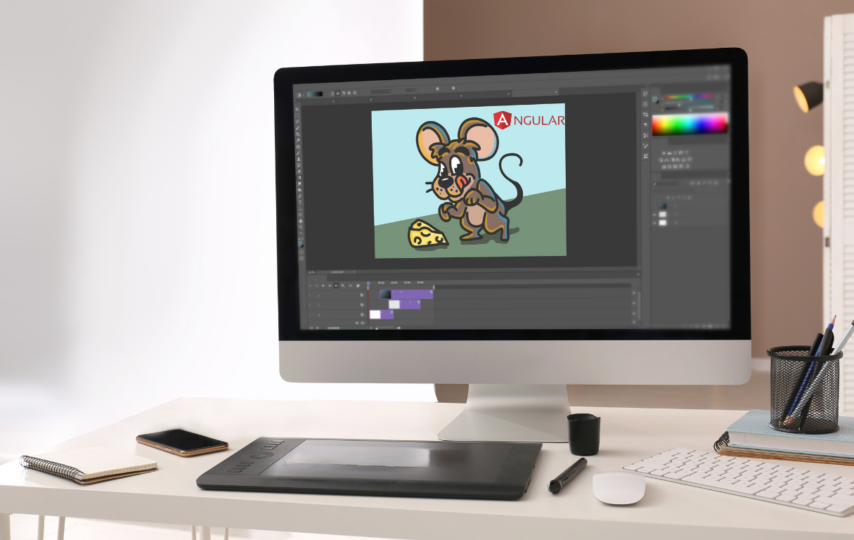Are you ready to make your pictures look awesome? We’re diving into the exciting world of image editing using Angular image editor. We’ll also nod to Filestack photo editor SDK, a handy tool that helps make all this magic happen. Pictures are everywhere in today’s digital world, making or breaking your website. You might wonder, “What’s all the buzz about Angular?”
Angular is like the special sauce that makes image editing easier and cooler. But it’s not all sunshine and rainbows – there are some challenges, too. That’s where Filestack photo editor SDK comes into play, like a trusty sidekick. Hence helping you overcome those challenges and make your images stand out.
So, join us on this image editing & latest trends adventure! Let’s get started!
What is the importance of angular image editing?
Image editing in Angular is super important! It helps make your pictures look awesome without needing fancy software. We aim to make the images appealing to visitors when we edit them. That means they’ll be more interested in what you’re showing them. Plus, it helps your brand look better and more unique.
People like cool pictures; good image editing can make them stand out. So, in a world full of visuals, making your images look great can be the key to getting attention and making a lasting impression. That’s why Angular image editing matters a lot.
What is the role of file uploaders in angular image editing?
In Angular image editing, file uploaders are like helpers. They let you choose and put your pictures into the editing space.
Once your pictures are there, you can cut them, change their size, or add special effects.
Think of it as getting your art supplies ready. File uploaders make it easy to start working on your photos in an Angular image editing app.
File uploaders save time and make it simple to make your pictures look better.
There are many file uploaders available in the market. Each of them comes with unique features and abilities. Let’s explore the Filestack file uploader.

Filestack’s image editing capabilities
Filestack provides a set of APIs and tools for managing your digital assets. It aids in tasks such as file uploads, transformations, and delivery for web applications.
Filestack also includes image intelligence features like image tagging and captioning. Here are some key image editing capabilities offered by Filestack:
Basic image editing
Resizing
Change image dimensions, fit, and alignment.
Crop and Smart Crop
Crop images with coordinates and dimensions. Smart crop adjusts photos to desired shapes without altering the aspect ratio.
Image Manipulation
Rotate, Flip, and Flop
Rotate images at various degrees, and flip horizontally or vertically.
Filters
Apply monochrome, sepia, sharpen, pixelate, blur, partial blur, black-and-white, oil paint, negative, and modulate.
Advanced Image Editing (Paid Plans)
Enhance Images
Use presets like vivid, beautify, fix_noise, fix_dark, fix_tint, and outdoor to enhance photos.
Watermark
Overlay one image on another to add watermarks.
Compress
Reduce image size (PNG or JPG) without compromising quality.
Red-eye Removal
Eliminate red-eye effects.
Image Borders and Effects
Apply effects like polaroid, rounded corners, torn edges, shadows, circles, vignettes, and borders.
Facial Detection
Detect and manipulate faces in photos, including cropping, blurring, or pixelating.

Integration with angular: A seamless experience
Integration of Filestack with your Angular app can give you the following benefits:
Filestack’s Intelligent Ingestion™ is adaptable. It can respond to shifting network conditions, ensuring a 99.999% upload success rate.
This unique technology grants your app instant content access. It works even while data is still in transit over the network.
Filestack simplifies content retrieval by consolidating files from over 20 sources into a single, reliable API. You won’t need to manage integrations with each service.
What are the latest trends in angular image editing?
Now, you can edit pictures with your friends at the same time. It’s like everyone painting on the same canvas.
Computers are becoming smarter with pictures. They can understand what’s in a photo and even help make it look better without much effort. Moreover, they can also help us detect faces or texts inside our images. This is what we call OCR technology. Filestack also comes with OCR technology.
According to the latest trends, you can also make pictures look good on any device. So your photos always appear great no matter which gadget you’re using.
Some apps let you edit images even when you’re not online. Hence, you can work on your photos anywhere, even without Wi-Fi.
You can add fun filters and special effects to your pictures to make them look awesome and more exciting.
Furthermore, humans are making image editing tools easy to use for everyone. So everyone can edit pictures effortlessly.
These trends are changing how we edit images, making it simpler, faster, and more enjoyable for students and everyone else. Developers are working hard to bring these cool features to your favourite image editing apps.
How do we implement the latest trends in angular image editing?
Stay up to date with the latest trends in image editing and technology. Follow industry blogs, attend webinars, and read articles to stay informed about what’s new.
Angular offers various libraries and tools for image editing. Explore these resources to integrate the latest trends into your Angular application.
Select image editing plugins and libraries that align with the trends you want. For example, if real-time collaboration is a trend you’re interested in, look for plugins that support collaborative editing features.
If you’re implementing AI features, like image recognition, you’ll need to integrate APIs with these capabilities. Companies like Filestack, Google, IBM, and Microsoft offer APIs for image-related AI tasks.
Ensure your image editing interface is responsive and works well on various devices. Use Angular’s responsive design features to adapt your interface to different screen sizes.
To enable offline editing, consider implementing service workers and caching mechanisms. It can make your Angular app work even without an internet connection.
Follow accessibility best practices when designing your image editing features. Ensure that users with disabilities can also take advantage of the latest trends in image editing.
Collect user feedback and be open to making improvements based on their suggestions.
Pay special attention to security when implementing features like two-factor image authentication. Ensure that user data and edited images are kept secure and private.

Final thoughts
If you want your image editing tools to be the best, you must keep up with the latest trends. This means embracing things like:
- Working together on images
- Using smart technology
- Make sure your tools work well on all devices, even offline
- Being friendly to everyone, including those with disabilities.
Keeping everything safe and flexible is crucial because technology is always changing.
FAQs
How do you create an image in angular?
To create an image in Angular, use the “img” tag in your HTML and set the “src” attribute to the image file’s URL.
How do you install the TUI image editor?
To install the TUI image editor, follow the steps in the official documentation or run ‘npm install tui-image-editor in your project directory.
How to crop an image in angular?
To crop an image in Angular, use the ‘ngx-image-cropper’ library or manually adjust the image dimensions using CSS.
Is there a free image editor?
Free image editors, such as GIMP, Paint.NET, and Photopea, offer various features for image editing.








